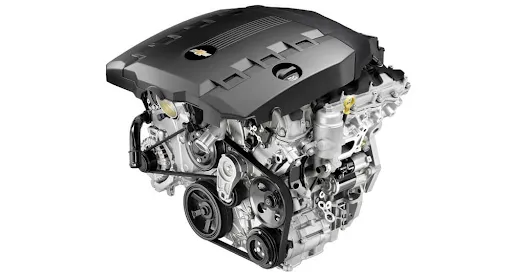Crucial Considerations for Making Certain High Quality and Longevity in operation Engines
When considering the acquisition of an utilized engine, ensuring its top quality and long life requires a multifaceted method. Maintenance history is a crucial variable, as it gives understanding right into the engine's previous care and prospective future reliability. Past paperwork, a thorough inspection of physical elements-- such as belts, hoses, and seals-- can reveal covert problems. Performance testing is also crucial, providing a snapshot of the engine's functional performance. Nonetheless, recognizing the subtleties of these evaluations and their ramifications can be complex. What are the essential techniques that can be employed to navigate this elaborate evaluation procedure efficiently?
Engine History Evaluation
In the world of used engines, a detailed engine history examination is extremely important to making certain top quality and reliability. Understanding an engine's past can supply essential insights into its performance capabilities and prospective future durability.
Furthermore, assessing any kind of background of repairs or replacements is important. Engines that have gone through considerable repair work may have underlying problems that could resurface. Understanding the context of such repair work, whether due to manufacturing problems or owner carelessness, is important in developing a detailed examination. Examining the engine's gas mileage can offer as a sign of wear and tear. Reduced gas mileage engines are typically much more desirable, however it is likewise essential to think about just how those miles were gathered. An engine made use of primarily for long-distance highway driving may remain in much better problem than one based on regular stop-and-go city web traffic.
Fundamentally, an exhaustive examination into an engine's background is necessary for making educated purchasing choices. used engines for sale.
Comprehensive Evaluation Overview
While comprehending an engine's history supplies useful context, an extensive examination is the next action to guarantee its present problem aligns with historic information. The evaluation needs to begin with an aesthetic assessment, inspecting for indicators of leaks, rust, and uncommon wear. Examine the outside for oil stains or coolant marks, which may show underlying issues.
Following, review the engine's mounting system for any type of loosened screws or irregularities that might affect efficiency. Pay attention to the condition of belts and pipes, as these parts are crucial for ideal engine capability. Examine for cracks, fraying, or any type of indicators of deterioration.

Recognizing Damage
Acknowledging indicators of wear and tear is critical for examining a used engine's long life and reliability. It entails a careful evaluation of numerous engine components to establish their present state and potential future efficiency.
Another essential element is inspecting the engine's seals and gaskets. These parts are vital for maintaining correct stress and avoiding liquid leaks. Proof of oil leakages or worn gaskets frequently suggests degeneration, possibly bring about extra extreme concerns if not dealt with promptly. In addition, abnormal noises throughout engine procedure, such as knocking or ticking noises, might show interior damages or too much wear on moving components like pistons or bearings.
The problem of belts and hoses is similarly crucial, as they play a vital duty in the engine's overall feature. Broken or torn belts and fragile hose pipes are signs of aging that could result in engine failure if overlooked. Finally, taking a look at the oil problem and filter can provide great site insights into previous upkeep practices, as dirty oil or clogged filters suggest neglect and accelerated wear.
Performance Screening Basics
Evaluating the wear and tear of engine components establishes the stage for an extensive evaluation with performance testing. Performance testing serves as a vital procedure in figuring out the functional integrity of a made use of engine. By mimicing real-world problems, it evaluates the engine's capacity to provide power efficiently and accurately. Secret metrics include horse power, torque, fuel performance, and discharges levels. This data provides beneficial insights right into the engine's present performance and aids determine potential concerns that may not be promptly visible.
Using dynamometers is an usual technique in efficiency screening. These devices gauge the engine's outcome across different conditions, using a detailed profile of its capability. Additionally, on-road screening complements dynamometer evaluations by observing engine behavior under normal driving scenarios, guaranteeing it meets the called for requirements for both safety and security and performance.
These tools examine engine administration systems, determining faults in electronic parts that could influence try here performance. Comprehensive testing not just validates the engine's operational status however also help in projecting future maintenance demands.
Maintenance and Care Tips
Correct upkeep and treatment are crucial to extending the lifespan of an utilized engine and ensuring its constant efficiency. Normal oil adjustments are extremely important; making use of the supplier's advised oil kind and grade can prevent too much damage. Furthermore, oil filters must be replaced concurrently to maintain optimum lubrication and sanitation within the engine.
Keeping track of fluid degrees, consisting of coolant, transmission liquid, and brake liquid, is important. Guaranteeing these fluids are at appropriate degrees aids stop getting too hot and other mechanical concerns. Inspecting belts and hose pipes for indications of wear, such as cracks or fraying, can avoid possible failings that may lead to pricey fixings.
Regular assessment of the air filter is likewise required, as a clean filter guarantees efficient airflow and burning, thus optimizing engine performance. Trigger plugs need to be examined and changed when required to preserve efficient gas burning and avoid engine misfires.
Finally, routine diagnostic checks utilizing expert tools can recognize possible problems prior to they come to be significant issues. By sticking to these upkeep and care pointers, used engine owners can ensure their engines continue to be trustworthy, efficient, and with the ability of performing well over a prolonged duration.